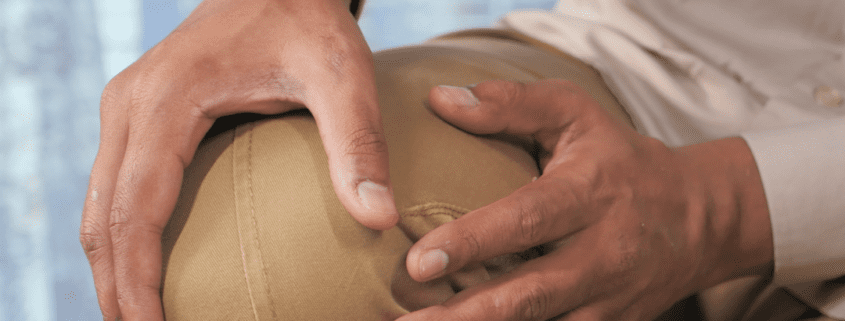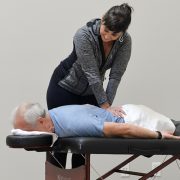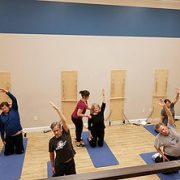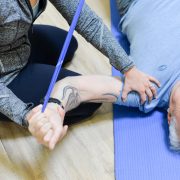Six Tips to Improve Knee Pain Naturally and on Your Own
When you’ve got persistent, nagging knee pain – it can have quite the impact on your quality of life. But the good news is there is plenty you can do naturally and on your own to help relieve knee pain, even if you’ve been suffering for years.
Here are 6 of my top tips for how you can improve knee pain naturally and on you own:
-
Strengthen Your Hips and Core:
Your hips and core provide essential support and stability to your entire body, but especially your lower limbs and knees. Strengthening this important muscle group is a key component for not only relieving knee pain, but preventing it as well. When you’ve got weakness or imbalance in your hips and core, it leads to poor alignment and compensatory stress on your knees during movements like walking, running, or squatting. Strengthening your hips and core will improve overall biomechanics, reducing the load placed on the knees and preventing excessive wear and tear.
-
Get (and stay) Flexible:
One saying you’ll hear me repeat over and over is: “mobility before stability”. That’s because when you’ve got stiffness in your joints, the surrounding muscles will try to compensate. And muscles don’t work as well when the joint they are in charge of moving doesn’t have full and free mobility. Good and optimized joint mobility will enhance the body’s ability to move efficiently and with proper body mechanics, reducing the strain on your knees. By increasing (and maintaining) your flexibility and range of motion – your body will move more freely and distribute forces more evenly throughout your joints and muscles – thus – reducing the risk of overload on your knees.
-
Interrupt Your Sitting:
Knee pain can come directly from your knee, but also from your spine (even when you don’t have any back pain). When you interrupt your sitting often throughout the day, this addresses both potential causes. For knees in particular, prolonged periods of sitting can cause stiffness, and lead to poor blood circulation in and around your knee joint. Sitting for extended periods can also lead to tightness in the hip flexors and hamstrings, which can negatively impact knee alignment and function. By taking regular breaks to stand up, stretch, or move around, you can relieve pressure on your knees, maintain good joint mobility, and prevent muscle imbalances that will only lead to more knee pain over time.
-
Get (and keep) Moving:
Regular movement and exercise helps to stimulate blood flow. And if you’ve got inflammation in your knees causing pain, good blood flow helps to reduce inflammation by delivering essential nutrients and oxygen, while also removing waste products. If your knees are on the arthritic side, engaging in low-impact exercises like walking, swimming, cycling, or Pilates can help build strength and endurance around your knees without putting excessive stress on the joints. Regular movement also helps lubricate your knee joints, which can reduce friction and discomfort during daily activities. And perhaps the biggest benefit of regular exercise and movement is the release of endorphins – which are your body’s natural painkillers that can help alleviate discomfort in any joint, not just your knees.
-
Choose Sensible Footwear:
The right (or wrong) footwear can make a huge difference in how your knees feel with walking, running, or standing. When you’ve got proper footwear, it provides the support and cushioning you need to reduce impact on your knees. Depending on the mechanics of your feet and ankles, footwear can also help to enhance or improve your alignment and stability. By choosing footwear that prioritizes comfort, support, and proper alignment, you can effectively reduce knee pain and improve your overall joint health.
-
Improve Your Balance:
Good balance is important for a lot of reasons, namely, it allows you to have good stability and control during movement, and it reduces your fall risk. But having good balance can also reduce the strain in your knees. That’s because having good balance requires the coordination and strength of your postural muscles, feet, and ankles to all work together and distribute forces evenly. When that doesn’t happen, your knees tend to overcompensate and suffer. So working to improve and maintain balance can help to decrease the stress on your knees by getting other joints and muscle groups to “join the party”.
If you’ve been suffering from knee pain for awhile and not yet incorporating any of these 6 tips into your daily or weekly routine, get started now and see if it helps.
If knee pain is getting in the way of you even being able to incorporate some of these tips, then it’s time to speak with a physical therapy specialist. They will help you identify the root cause of your knee pain and come up with a treatment plan that is designed to get rid of your pain – and teach you how to keep it gone – naturally and on your own.
Are you local to Portsmouth, NH? Consider speaking with one of my specialists to see if we would be a good fit to help! CLICK HERE to request a free discovery visit.
Dr. Carrie Jose, Physical Therapist and Pilates expert, owns CJ Physical Therapy & Pilates in Portsmouth and writes for Seacoast Media Group. To request a free copy of her Knee Pain Free Report CLICK HERE or to get in touch, email her at [email protected]










